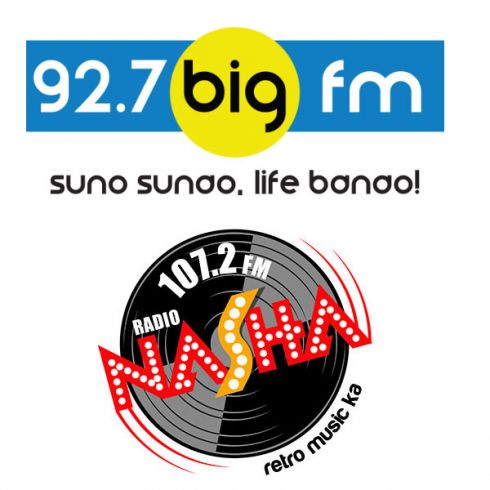
MUMBAI: The Total Income from Operations grew by 9.6 per cent for the HT Media Limited for the fiscal ended March (FY-16, current quarter), when compared to the same quarter in 2015. The impressive growth occurred before the organisation launched its second radio station in Delhi and Mumbai. With the launch of the radio station – Radio Nasha - dedicated to the retro music era, HT Media ventured into vertical establishment focusing on a particular target or niche audience.
The Chief Executive Officer for Radio and Entertainment at HT Media Limited, Harshad Jain, said, “Currently, there is no radio station that does justice to the excitement, romance, and attitude of the magical eras of 1970s-1990s. Radio Nasha 107.2 FM will be the first ever radio station packed with passion, fuelled by Bollywood celebrities and driven by RJs with a style that will be young, energetic and classy. Radio Nasha will make retro ‘cool’ and create a station that becomes the destination station for listeners. We look forward to delight listeners with innovative content and presenters that will be an industry first on radio.”
The tried-and-tested formula for a radio station dedicated to a particular genre or audience has successfully worked for RBNL’s Big FM. Big FM through its differential programming has been able to tap the youth and adult alike. However, Radio Nasha’s programming strategy helps the station to cater to a target audience with more dispensable income, that is, 30s and 40s. In its core content, Big FM airs Indian music, ranging from the 50s to the recent past. Its original program ‘Suhaana Safar with Annu Kapoor’ continues to be the top performing show in Mumbai throughout the most period of the fiscal year. The CEO of RBNL, Tarun Katial believes the arrival of a new retro station will not affect Big FM’s presence as a brand in the industry, and it only motivates them further. Informed Katial, “BIG FM has always been on the forefront of seeding unique and thoughtful programming concepts for its shows and the brand overall. As a brand, we have been standing strong all these years due to our innovative strategies and programming. The entry of a new player has never been the reason behind the brand’s decision to come up with a renewed strategy.”
In Mumbai, Radio Nasha airs as 91.9 FM, while in Delhi, it airs as 107.2 FM. On its debut week, Radio Nasha finished at the seventh position in Delhi, before jumping to the fourth position a week later, and retaining the spot for the latest week. The ratings project Nasha’s strategy has worked so far, and the listeners are warming up to the idea of an era-dedicated radio channel. Due to its unique and distinctive concept based shows with a common binding theme of retro, Big FM has been able to establish itself as a retro station with a contemporary vibe.
The Marketing Head at Radio Nasha, Ravi Arya said, “Our product and brand strategy is sharply defined. Radio Nasha has been aggressively marketed in Delhi and Mumbai. The marketing mix comprised of print, OOH, digital and trade outreach. HT publications across Delhi and Mumbai ran aggressive print campaigns across teaser and launch phases. We undertook aggressive trade outreach in form of roadshows and visibility in trade media to communicate our differentiated offering.”
On the programming front, HT Media may have produced a unique content, bringing a new factor to the shaky radio industry, but is the content luring enough to attract brands and advertisers?
Management Consultant and expert on Radio industry, Harish Bijoor, said, “Every listener passes through the phase of retro in his/her life. The country is vast enough to have a place for different genres. With a dedicated format, Nasha knows the kind of audience it would target. Although, the station has started as a vertical channel (specified to one genre), it can venture into horizontal channel (one that offers multiple genres), like how Radio City did. It started as an English channel, but then offered local content too.”
Marketing and Advertising expert, Pratap Bose understands retro will continue to remain a popular genre, irrespective of how evolved the radio industry becomes. “Finding suitable advertisers for the channel would not be rocket science for Radio Nasha. The brands that would make sense to the genre (or era) obviously will endorse their products on the station. Being a first mover gives Radio Nasha a direct advantage, and probably, brands would wait for a couple of months to observe the station’s progress in the two cities before investing money into it.”
Music and Media specialist, and former National Programming Head at Red FM and Oye! FM, Vehrnon Ibrahim believes that advertisers would not wait to jump into the wagon. “First of all, let us understand from the broadcaster’s point-of-view. Launching a channel focusing on a niche audience would only make sense if it is cost effective. It’s a classic debate about size of audience v/s value of audience. The factors like ‘Time Spent Listening’ and RAM ratings would not largely influence the brands or the advertisers’ decisions, but the content would. Nasha would be focusing on the audience belonging to the 40-50 age bracket, and surely, several brands exist who manufacture products for that specific audience.”
In conclusion, these two cities are big enough to include two retro stations, but only the tie-ups on the commercial fronts will decide the evolution for them. Niche content delivers to the niche audience, and Radio Nasha needs to play its cards right in order to ensure the commercial growth matches the growth in the rankings.